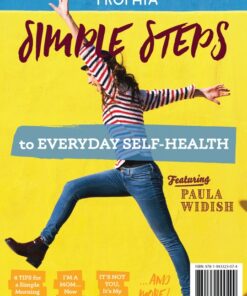Have you ever craved a particular food so much that you find yourself mixing it with just about anything you can think of, no matter how crazy? That’s how I’ve been feeling about sesame seeds lately. Luckily for me, they have a pretty neutral flavor—though I wouldn’t necessarily recommend them in tea. Yes, I said it. I put sesame seeds in my tea. That’s the kind of intense craving I’m talking about. In my defense, it was ginger tea, a natural combination with sesame seeds—so it totally made sense. Even if, due to some minor choking issues, I only tried it once.
When I get strong urges to eat particular foods, I wonder what my body is trying to tell me. And of course I go looking for answers. What could possibly be in these little tan seeds that my body is missing? Aren’t they just a topping for hamburger buns? Clearly, I needed to know more.
I started with the books in my personal nutrition library. I didn’t think I’d find much information about sesame seeds in particular, so imagine my surprise when I discovered not one, not two, but three articles about these little seeds, all in one book? It was Dr. Royal Lee’s From Soil to Supplement, arranged and edited by Mark R. Anderson. One of these articles, “Sesame Seed—An Important Food,” can be found in the online Historical Archives at Selene River Press.
Discussed at great length, and with great admiration, Dr. Lee explains why these seemingly insignificant seeds are worthy of everyone’s attention:
- Sesame seeds are a rich source of vitamin T. While we don’t need much of this nutrient in our diet, it has direct benefits on many aspects of our health.
- Sesame seeds increase blood platelets, which helps to repair and heal our skin and improves the overall appearance of our complexion.
- The daily consumption of sesame seeds is associated with increased mental stamina, as seen in Turkish soldiers during the Korean War.
- Composed of 45 percent protein and 55 percent oil, sesame seeds are packed with calcium, phosphorus, niacin, and the amino acid methionine.
- Sesame seeds can help lower cholesterol and have been used to effectively treat cirrhosis of the liver.
The articles I found in Dr. Lee’s From Soil to Supplement are all dated from the mid-to-late ’50s, but you can find more recent accolades for sesame seeds. They’re reported to have medicinal uses for various forms of cancer. They also contain sesamin, a lignin or phytoestrogen as well as zinc which helps keep our bones healthy.
There are many simple ways to incorporate sesame seeds into our diets. In all of its various forms—as seeds, oil, or tahini (sesame butter)—these nutritional powerhouses can be used in everything from ice cream to pie crust. Personally, I like them sprinkled on my oatmeal as well as my salads (which often have a tahini dressing for good measure), or with the occasional smoothie. They’re also a great addition to many of our baked goods. I make a weekly batch of hummus, which I devour with raw veggies as a regular lunch or snack. Though I probably won’t repeat my wacky tea experiment, I think I’ll enjoy this recipe for sesame honey bites—as well as the variation that calls for black sesame seeds and molasses. Scrumptious.
I’ve been indulging in my craving for sesame seeds long enough now to reap some benefits. What benefits, you ask? Eating them leaves me satisfied and satiated. After munching on some hummus and veggies, my energy level and ability to focus are right where I need them to be. Long-term, I trust that I’m getting deeper, long-lasting internal benefits as well. My body won’t always ask for the amount of sesame seeds I’m giving it now, and I’ll be paying attention to those signs. Until then, this is a craving that I can give in to without a qualm.
What if, in the future, my body demands something a little less guilt-free, such as salty snacks? After all, not all food cravings lead us to healthy choices—at least not on the surface. A post on the website Lifehack titled “What Your Food Cravings Really Mean” contains an infographic that will give you a better idea of what nutrients your body is really looking for when you’re reaching for the chips—and what whole foods you should eat instead. This is a good starting point for a healthy perspective on the food cravings we all have at one point or another.
Are you interested in benefitting from the nutrients found in sesame seeds, but prefer a supplement? Standard Process carries Sesame Seed Oil perles. Ask your healthcare provider if you might benefit from taking it.
When was the last time you had a wild food craving? Did you give your body what it wanted, or did you think of it as a passing fancy?
Photo from iStock/Petershort



